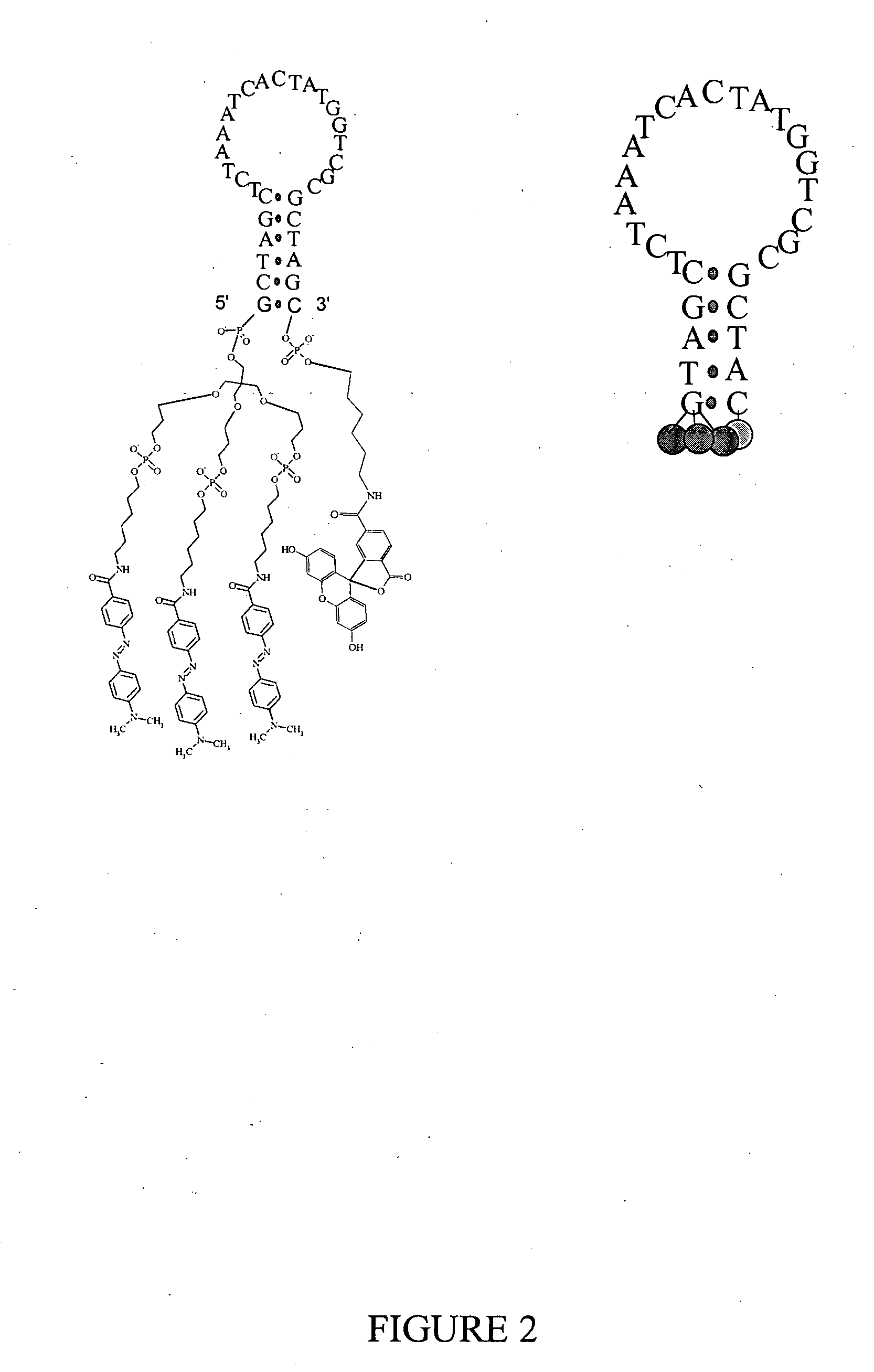Multi-acceptor molecular probes and applications thereof
a molecular probe and multi-acceptor technology, applied in the field of multi-acceptor molecular probes, can solve the problems of increasing the fluorescence anisotropy of the fluorophore, etc., and achieves the effects of slow diffusional rotation of the protein binding probe, high affinity and selectivity for their protein targets, and high affinity and selectivity for their target proteins
- Summary
- Abstract
- Description
- Claims
- Application Information
AI Technical Summary
Benefits of technology
Problems solved by technology
Method used
Image
Examples
Embodiment Construction
[0056]According to the invention, molecular beacons having multiple quenchers, referred to herein as either “high sensitivity molecular beacons” (HSMB) or “multi-acceptor molecular probes,” and methods for forming the same are described herein. Such Multi-acceptor molecular probes provide about a 100× increase in sensitivity over traditional DNA probes, and more than a 10× increase in sensitivity over conventional single quencher molecular beacon probes. Such sensitivity enables Multi-acceptor molecular probes to be used in a variety of applications to provide improved results, including gene expression study, intracellular protein monitoring, and early cancer diagnosis, particularly where high sensitivity detection methods are required. The signal enhancement provided by Multi-acceptor molecular probes provides higher accuracy, reduces time and cost for molecular beacon sequence selection, design and preparation, as well as improves the overall productivity of the research where mo...
PUM
| Property | Measurement | Unit |
|---|---|---|
| Fluorescence | aaaaa | aaaaa |
Abstract
Description
Claims
Application Information
 Login to View More
Login to View More - R&D
- Intellectual Property
- Life Sciences
- Materials
- Tech Scout
- Unparalleled Data Quality
- Higher Quality Content
- 60% Fewer Hallucinations
Browse by: Latest US Patents, China's latest patents, Technical Efficacy Thesaurus, Application Domain, Technology Topic, Popular Technical Reports.
© 2025 PatSnap. All rights reserved.Legal|Privacy policy|Modern Slavery Act Transparency Statement|Sitemap|About US| Contact US: help@patsnap.com



